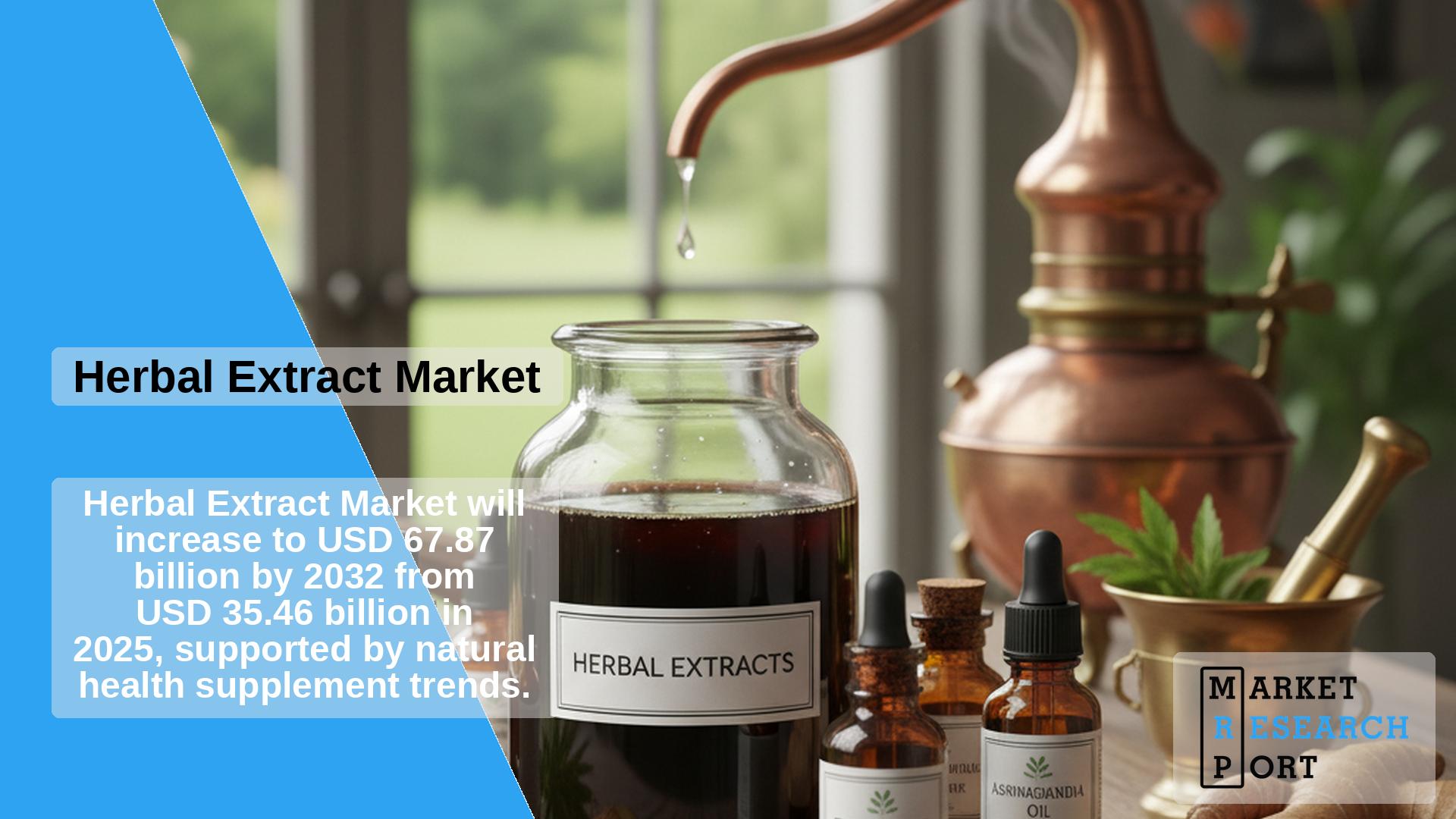
The global herbal extract market was valued at USD 36.27 billion in 2025 and is forecasted to reach USD 62.04 billion by 2030, reflecting a CAGR of 8.6% from 2025 to 2030. Growth is being fueled by a rising preference for preservative-free, gluten-free, and natural foods, beverages, cosmetics, and personal care products. Increasing consumer awareness about the health and therapeutic benefits of herbal ingredients continues to expand the scope of the industry across key regions.
The market’s expansion is strongly linked to the demand for herbal ingredients in pharmaceutical, food & beverage, personal care, and nutraceutical applications. In recent years, urbanization and changing consumer lifestyles have led to a surge in popularity of nutraceuticals and wellness supplements with natural and plant-based content. Additionally, government projects supporting herbal cultivation and extraction, such as India’s significant investments in medicinal plant schemes, continue to uplift the market’s supply chain.
Global personal care and cosmetics brands are embracing natural and organic ingredients in response to demand from eco-conscious consumers, especially across North America and Europe. This trend has created opportunities for specialized producers and exporters in India, China, and countries with favorable climates for herb cultivation. Meanwhile, food manufacturers are incorporating herbal extracts for clean labeling, longer shelf-life, and improved flavor and aroma in beverages and snacks.
There is steady momentum in nutraceuticals owing to consumer demand for nutritional supplements that fit busy lifestyles. Herbal extracts offer efficient nutritional delivery and are preferred for their anti-inflammatory, antioxidant, and antibacterial properties—qualities increasingly sought in pharmaceuticals, food, and personal care items. Awareness campaigns from major brands and regulatory support for medicinal plant cultivation also contribute to market penetration and geographic expansion.
Cherry extract represented the largest product share of 11.6% in 2025, driven by skincare and pharmaceutical applications for its anti-aging and anti-inflammatory benefits. Curcumin, extracted from turmeric, continued to register the strongest growth due to its potent bioactive properties and expanding use in health supplements, cosmetics, and natural remedies.
Fenugreek seed extract demand is rising globally, especially with increased uptake in Ayurvedic formulations, sports nutrition, and diabetes management. Similarly, anise seed and other spice extracts are gaining traction in beverages, bakery, and digestive supplements due to their clean-label appeal and digestive health benefits.
The personal care & cosmetics application led the market with a 31.4% share in 2025. Brands are increasingly using herbal extracts for their anti-bacterial, anti-inflammatory, soothing, and skin-protective features. Essential oils and botanical extracts are now staples in soaps, shampoos, body sprays, perfumes, baby care, and hygiene products.
Food and beverage applications also remain robust. Herbal extracts provide natural preservation, enhance sensory profiles, and meet consumer expectations for minimally processed and healthier products. Their antimicrobial properties add shelf-life and safety to packaged goods without artificial chemicals.
Asia Pacific dominated in 2025, contributing over 46% of global revenue. India and China are key growth engines due to superior herb availability, established Ayurvedic traditions, expanded pharmaceutical manufacturing, and robust exports. China remains the largest market for functional foods and herbal supplements, with rising demand for nutraceuticals and clean-label products post-pandemic. India’s strong herbal extract production and exports are favored, especially for stable curcumin and spice extracts under diverse climatic conditions.
Major opportunities exist for herb exporters in Asia and Latin America targeting North American and European markets. Europe’s growing organic cosmetics and food trends further support adoption, while North America continues to grow with expanding natural product portfolios and evolving dietary preferences.
Competition is intensifying with manufacturers focused on innovative product launches, eco-friendly extraction methods, and geographic expansion. Most global players are clustered in Asia due to material availability and extraction technologies. Strategic investments and collaborative ventures are accelerating the penetration of herbal extracts in multinational brands and health-focused startups.
| Report Attribute | Details |
| Market size value in 2025 | USD 36.27 billion |
| Revenue forecast in 2030 | USD 62.04 billion |
| Growth rate | CAGR of 8.6% from 2025 to 2030 |
| Historical data | 2019–2024 |
| Forecast period | 2025–2030 |
| Quantitative units | Volume in tons, revenue in USD million/billion, and CAGR from 2025 to 2030 |
| Report coverage | Volume and revenue forecasts, company ranking, competitive analysis, growth trends |
| Segments covered | Type, application, region |
| Regional scope | North America; Europe; Asia Pacific; Central & South America; Middle East & Africa |
| Country scope | U.S.; Canada; Mexico; Germany; UK; France; Italy; Spain; China; India; Japan; Vietnam; Malaysia; Brazil; Argentina; South Africa; Saudi Arabia |
| Key companies profiled | Botanic Healthcare; VIDYA HERBS Pvt. Ltd.; Allicin Pharm; HerbalHills; Acara Bioherb Pvt. Ltd.; Pioneer Enterprises (I) Private Limited; Sydler India Pvt. Ltd.; Herbal Creations; Alpspure Lifesciences Private Limited; IDOBIO CO., LTD.; Döhler GMB; MartinBauer |
The market analysis provides volume and revenue forecasts across major product types, applications, and global regions from 2019 to 2030.
What is the value of the global herbal extract market in 2025?
The market reached USD 36.27 billion in 2025.
What is the expected market growth rate?
The market is projected to grow at a CAGR of 8.6% and reach USD 62.04 billion by 2030.
Which region leads the herbal extract market?
Asia Pacific led with over 46% share in 2025, supported by herb availability, export capacity, and consumer demand for natural products.
Who are the main companies in the herbal extract market?
Key players include Botanic Healthcare, VIDYA HERBS Pvt. Ltd., Allicin Pharm, HerbalHills, Acara Bioherb Pvt. Ltd., and MartinBauer.
What are the primary growth drivers?
Growth is driven by increased demand for natural, preservative-free foods and beverages, rising popularity of herbal cosmetics, and greater awareness of the therapeutic advantages of herbal extracts.